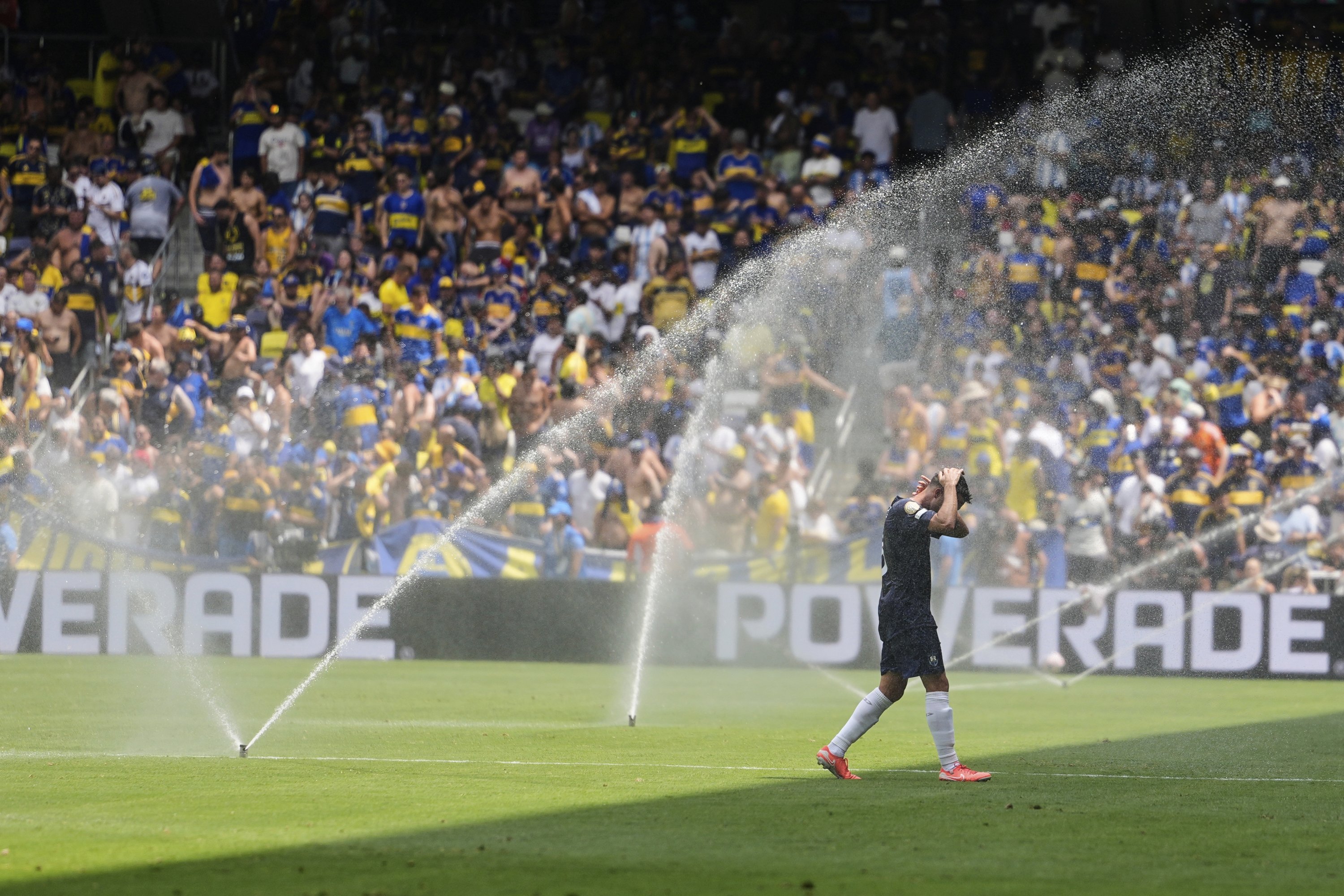The recent FIFA Club World Cup held across 11 American cities was not just a showcase of global football talent but a blistering warning about the escalating dangers of playing in extreme heat – a challenge set to intensify at next year’s World Cup co-hosted by the U.S., Mexico and Canada.
Throughout the tournament, soaring temperatures and fierce thunderstorms forced FIFA to implement enhanced heat protocols.
These included extra hydration breaks, increased water supply at the sidelines, and cooling stations equipped with fans and shade for players.
Despite these measures, Chelsea midfielder Enzo Fernandez revealed the brutal conditions left him dizzy and pleaded for FIFA to avoid afternoon kickoffs at the World Cup next summer.
Scientific experts warn that the tradition of staging the World Cup in June and July, dating back to the first tournament in 1930, faces mounting risks due to global warming.
According to the U.S. National Oceanic and Atmospheric Administration, average global temperatures during these months have risen 1.05 degrees Celsius (1.89 degrees Fahrenheit) since the early 20th century, with European summers warming even faster by 1.81 degrees Celsius.
This rise in heat, coupled with longer and more intense heat waves, is making outdoor sports increasingly hazardous.
Professor Piers Forster, director of the Priestley Centre for Climate Futures in Leeds, England, sounded a stark warning: “We are only one heatwave away from a sporting tragedy.” He urged sports governing bodies, including FIFA, to seriously consider more dramatic changes such as shifting the tournament to winter months or cooler locations.
Climatologist Friederike Otto of Imperial College London added, “If you want to play football for 10 hours a day, they’ll have to be the hours of the early morning and late evening – if you don’t want players and fans to die from heatstroke or get severely ill with heat exhaustion.”

FIFPRO, the global players’ union, has flagged six of the 16 host cities for the 2026 World Cup as “extremely high risk” for heat stress, underscoring the severity of the problem.
FIFA President Gianni Infantino acknowledged concerns, promising that the stadiums with roofs will be prioritized for day games.
Yet with the tournament expanding from 32 to 48 teams, the packed schedule will likely still require many afternoon kickoffs.
The 2030 World Cup, planned for Spain, Portugal, and Morocco, faces similar, if not greater, heat challenges.
These countries have experienced multiple days with temperatures soaring above 40 degrees Celsius (104 degrees Fahrenheit) this summer.

Despite these warnings, FIFA’s internal review of the 2030 bid downplays the risk, claiming weather conditions are “unlikely to affect the health of players or other participants.”
Heat poses a direct threat to athlete health. Julien Periard of the University of Canberra explained that playing under extreme heat can cause hyperthermia – dangerously elevated body temperature – leading to increased cardiovascular strain, muscle cramps, heat exhaustion, and potentially fatal heat stroke.
Other major sports events often schedule competitions in early morning or late evening to mitigate heat risk, but football’s World Cup timing traditionally revolves around European television audiences, making changes difficult.
The 2022 Qatar World Cup was a notable exception, moved to November and December to avoid intense summer heat. A similar adjustment is expected for Saudi Arabia’s 2034 tournament.

However, shifting the World Cup calendar is complicated. Europe’s powerful domestic leagues and the Champions League depend on uninterrupted seasons, and FIFA has not indicated any serious consideration of alternate dates for upcoming tournaments.
Beyond elite sport, climate change is impacting all physical activity.
Professor Ollie Jay from the University of Sydney noted that in 2023, athletes and recreational exercisers face 28% more days with moderate to severe heat risk compared to the 1990s.
University of Pennsylvania climate scientist Michael Mann described this as “symbolic of something bigger,” warning of the fundamental disruptions climate change poses to modern life.
Content Source: www.dailysabah.com

